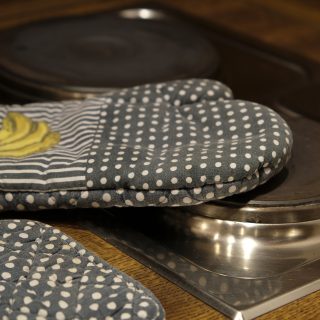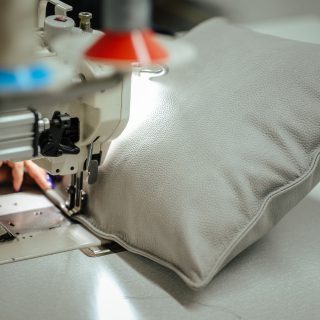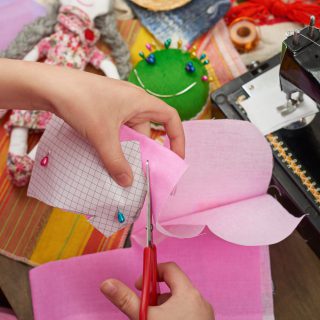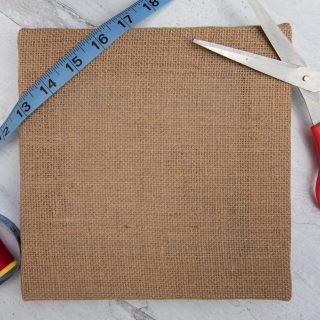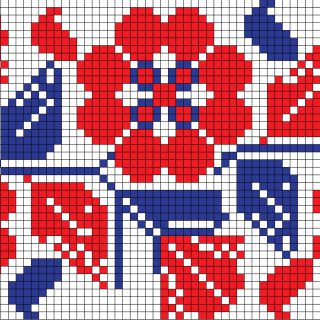Ripped jeans are a controversial piece of clothing. Some can carry it like it was only meant for them and on others, they look like, in T. S. Eliot’s words, “a silk hat on the head of a Bradford millionaire”. Also, whereas some see it as perfectly normal, for others, it’s a taboo, a no-no, a heresy.
As a person who celebrates diversity no matter what form, I have no problem with ripped jeans, and I have worn my fair share of them over the years. However, I am also a responsible owner of a sewing website (objectively speaking, the best one in its field); therefore, understanding why you wouldn’t want to wear your jeans as they are once they are ripped and telling you how to fix ripped jeans are part of my responsibility to the internet.
Before delving into the subject matter, though, let me tell you that there isn’t only one way to fix ripped jeans as there isn’t only one way your jeans can get ripped. In this post, I’ll teach you which method is best for what kind of rip and give you tips on how to carry out these methods.
How to Fix Ripped Jeans: Different Methods for Different Rips (and Different People)
The Best Method for Clean Rips: Hand Stitching
What we in the sewing community call a “clean rip” is one in which the fabric is torn but no fabric is lost. As there is no fabric lost, you don’t need a patch to fix those rips – nor do you need to turn your sewing machine on because mending the tear by hand is quite easy, and even if you have never taken up a needle and thread in your life before, you can pull it off at your first your try with the right guidance.
The right guidance:
- Clean the loose threads that come out of the fabric as a result of the tearing.
- Ready an interfacing thread or a piece of fabric behind the tear. You might also use the Singer iron-on mending patch as interface even though they are not really meant for such use.
- Iron the tear and its surrounding area to make it flat and to secure the interface.
- Find a thread that is the same colour as your jeans.
- Start by threading the needle from under the interface and onto the fabric.
- Stitch on using either a dense zig zag stitch – in other words, go from one side of the tear to the side and make sure your stitches are as frequent as possible to achieve maximum sturdiness.
- Trim the excess thread and iron it.
And that is how you close up a clean rip on jeans.
The Best Method for Open Rips: Sewing a Patch Behind the Hole
An open rip is when a piece of fabric is lost when the jeans are torn, and their fixing requires a patch to be applied. There is only a small possibility that the end-result will hide the fact that your jeans were ripped and fixed, so proceed knowing that.
For a good patch repair on jeans, you need a thread and patch the same colour as that of the jeans. Using a sewing machine is not a must, but using one might make the process easier.
The process:
- Trim the loose thread and fabric that hangs through the hole. You may as well go and trim the fabric that’s still intact. That way, you’ll end up with a hole that’s much easier to sew – especially if you’re considering doing a zig zag stitch. A zig zag stitch on a non-geometric patch is even worse than ripped jeans.
- Turn your jeans inside out and affix the patch temporarily with pins or a temporary hand-stitch behind the hole.
- You can use whatever stitching technique you like for sewing the patch, but the most preferred techniques are zig zag or straight stitches.
If you have further questions about sewing a patch or sewing on a patch, I happen to have written the very guide for how to sew on a patch as well.
The Best Method for Mending a Seam: Seaming It Back
I apologize for writing a subtitle as if there is another way of mending a seam when there actually isn’t, but that’s the format I am using for this particular article, and no, I won’t budge! Also, you would probably believe me if I told you that there are people who try sewing patches when their jeans only suffer a little tear on the seam. So, there are other methods.
Anyway, let’s get back to it. Seaming a torn seam back sounds like an easy job, but it’s probably one of the most difficult and boring methods included in this article. You can have fun with a patch and you can easily handle a clean rip, but a seam might pose more of a difficulty than those, and you might need some tips for it.
The tips:
- See what color of thread the original seam is stitched with and find a thread that at least resembles that. Normally, I am very lenient about the color of threads, patches, and whatnot, but when it comes to mending a seam, it’s best to pick a color that matches.
- See what type of stitching is used on the seam and what kind of pattern is followed. Replicating it perfectly will be impossible because the original seam was managed by a machine and you probably have to do it by hand, but the closer you get to the technique and pattern of the original seam, the better the end-result will look.
- See if the needle you have is able to penetrate the seam. The seams of jeans are much thicker than other seams, and some needles might just break during the mend. To prevent such an outcome, make sure you have a strong and sharp needle.
Under the light of these tips, now you can go and mend that torn seam.
If you have any further questions about the three types of rips mentioned above or if you want to learn more about them because you want to fix other clothes that are ripped as well, my guide about how to sew holes is impatiently awaiting its readers.
The Best Method for Small Holes on Jeans: Darning Stitch
The rip on your jeans is not exactly a clean one, meaning that there is some fabric lost, but also, the hole is not really a big one, so trying to find a patch for it wouldn’t really be worth it. What do you do? I prefer and recommend a darning stitch for that.
A darning stitch is quite easy: you just have to weave the thread (preferably the same color as that of the jeans) back and forth over the hole – first, horizontally, leaving as little space as possible, and then vertically, leaving as little space as possible again.
Depending on your success when choosing the color of the thread, the visibility of the repair will change, but as long as you stick to the technique, the pattern of the fabric will not seem that disrupted when you are done.
It’s easier to do it with a sewing machine, but you can do it by hand as well.
The Best Method of Fixing Ripped Jeans for Creative People: Embroidery
Now you might be shaking your heads in disapproval, thinking: “Yet another reason for Kristina to mention and provide a link for her incredulous, magisterial embroidery machine reviews,” but I assure you that that is not the case at all. If you are not covering up patches with embroidery, you are missing out on a lot.
First, you are not going to find any better cover for patches. Second, it won’t matter whether you have done a great job patching or not because as long as your embroidery is successful, you’ll be alright. Third, actually, you’ll be more than alright since that embroidery of yours will draw attention – and in a good way! And last but not least, you can add a breath of fresh air into your old jeans with your creativity.
Embroidery techniques don’t really differ much on the basis of fabric, so I will refer you to my embroidery guide on sweatshirts here in case you want to learn more. Also, I don’t know if I have mentioned it before, but I just have an amazing product guide on embroidery machines, which you might be thinking of purchasing by now as I presented a rock-solid case why embroidery is the best way to patch ripped jeans. Of course, I’d understand if you are reluctant to buy one – then, you should also know that you can embroider with your sewing machine.
The Best Method of Fixing Ripped Jeans for Lazy People: Iron-On Patches
You cannot bother sewing let alone embroidering? Thankfully, there are iron-on patches specifically designed for mending jeans (or, at least, making them look mended). As the name of the product suggests, you just have to iron it on the fabric, and you are good to go. You can also sew them using a zig zag stitch.
Final Words
I imagine future archaeologists will discover all the ripped jeans from our time and theorize that we didn’t know how to fix them, unaware of our fashion choices. Then they are going to discover me and my website and regard me as a pioneer way ahead of her time because I thought of how to fix ripped jeans and I thought of it thoroughly – alas, to no avail, since I was only a misunderstood genius.
Dear readers of mine, to make that future possible, I am asking you to print this particular article and hide it in as many underground bunkers that will stand the test of an apocalypse as possible. Purely for historical purposes, of course, and nothing at all to do with my ego.
Last update on 2025-04-02 / Affiliate links / Images from Amazon Product Advertising API


